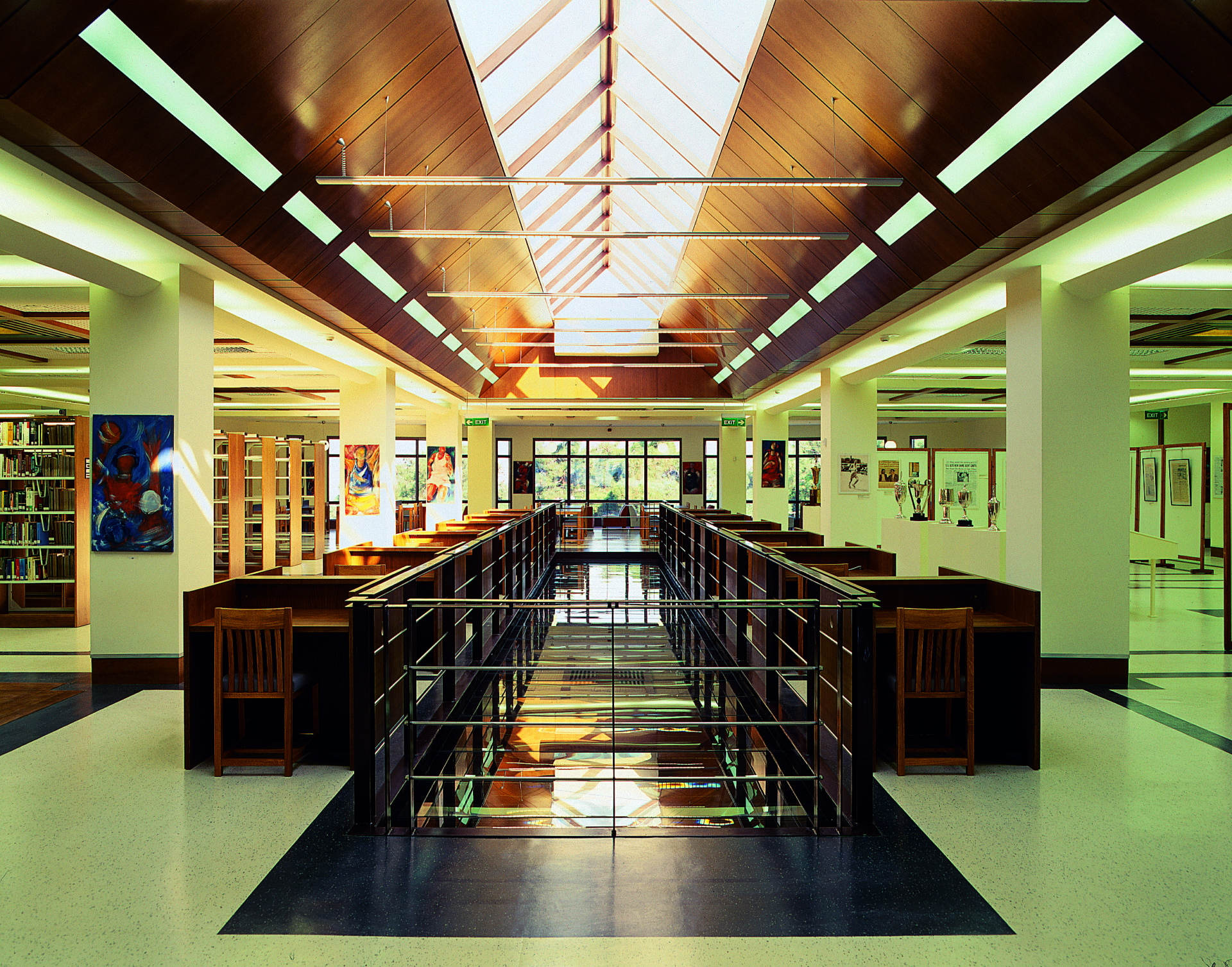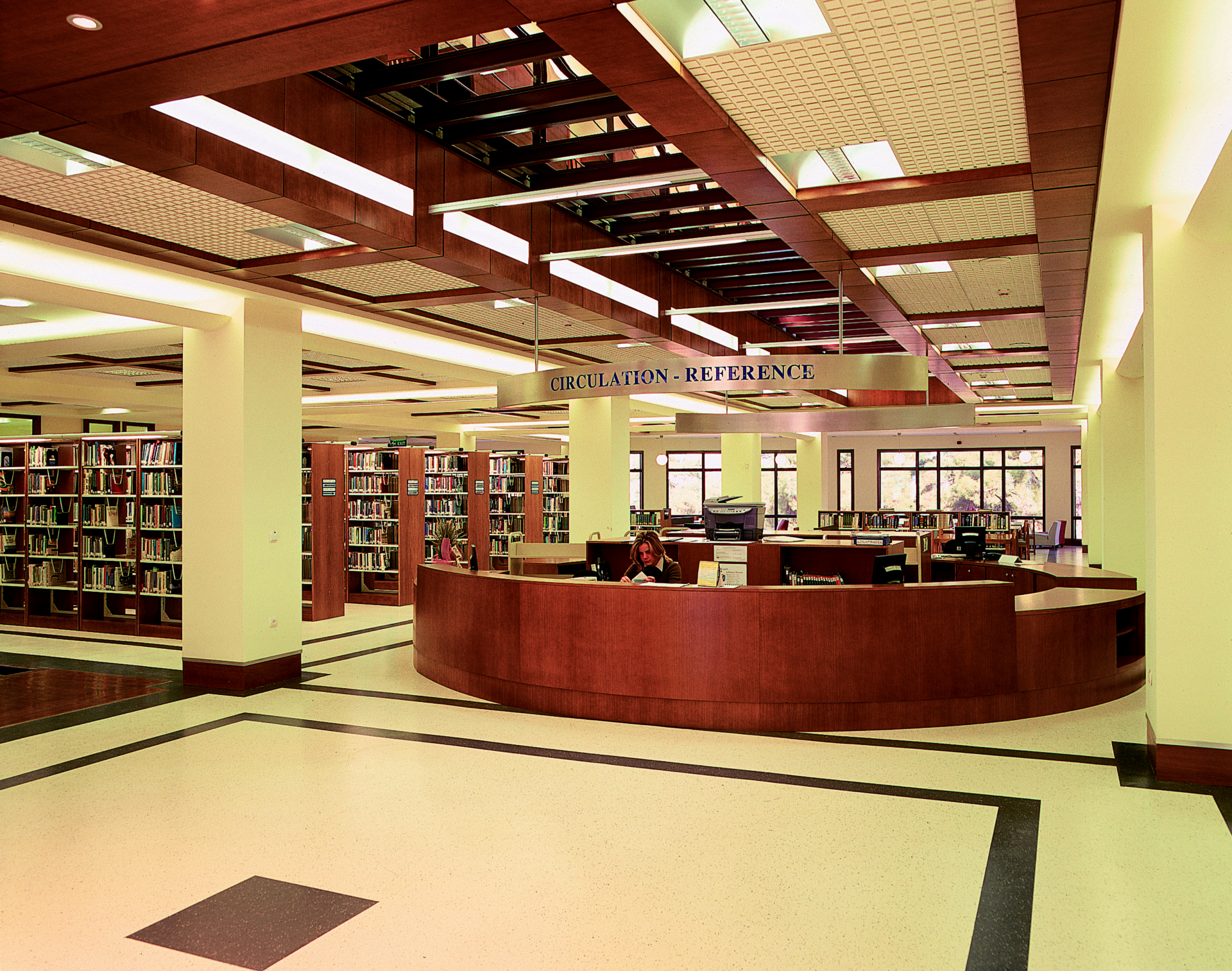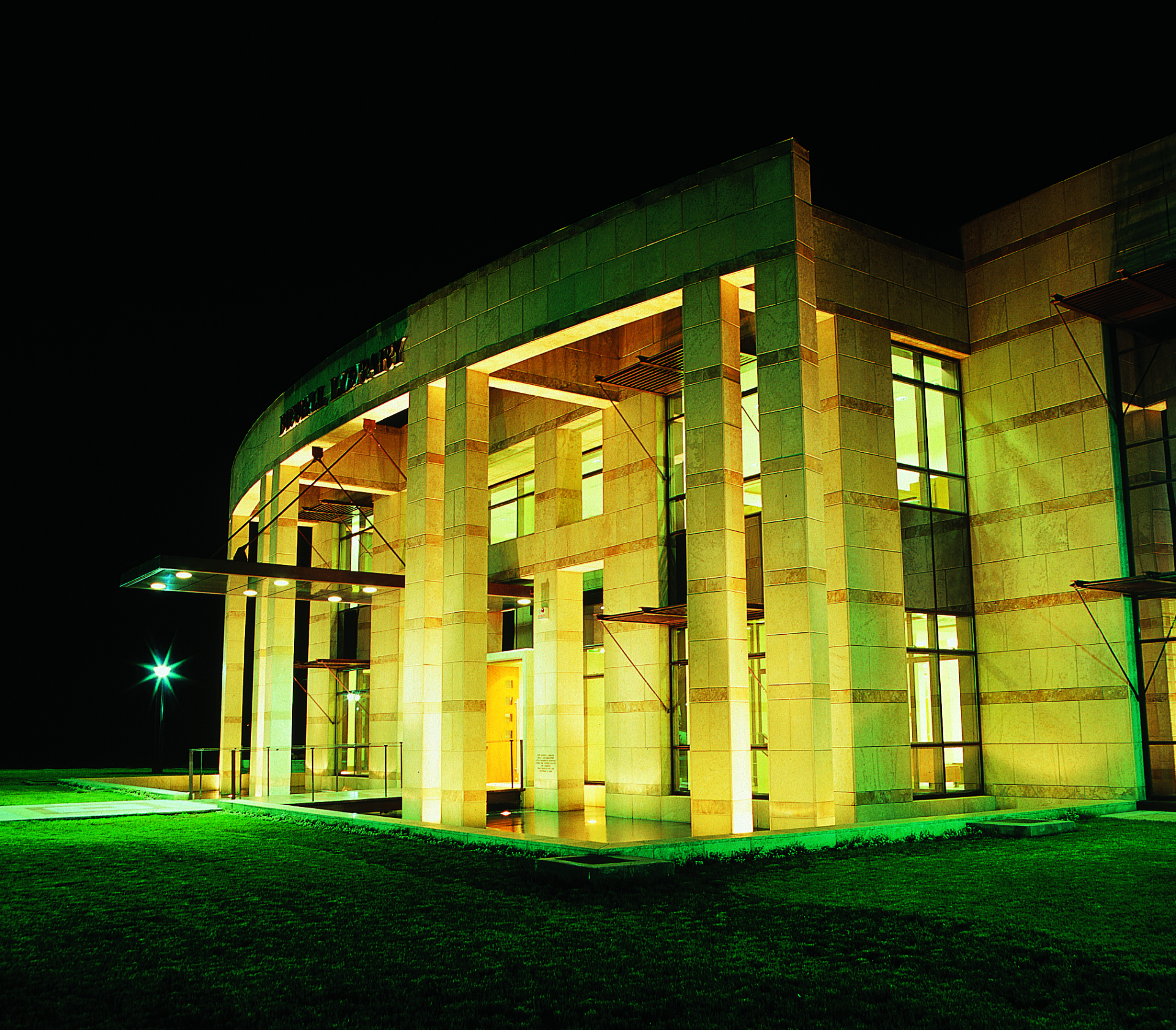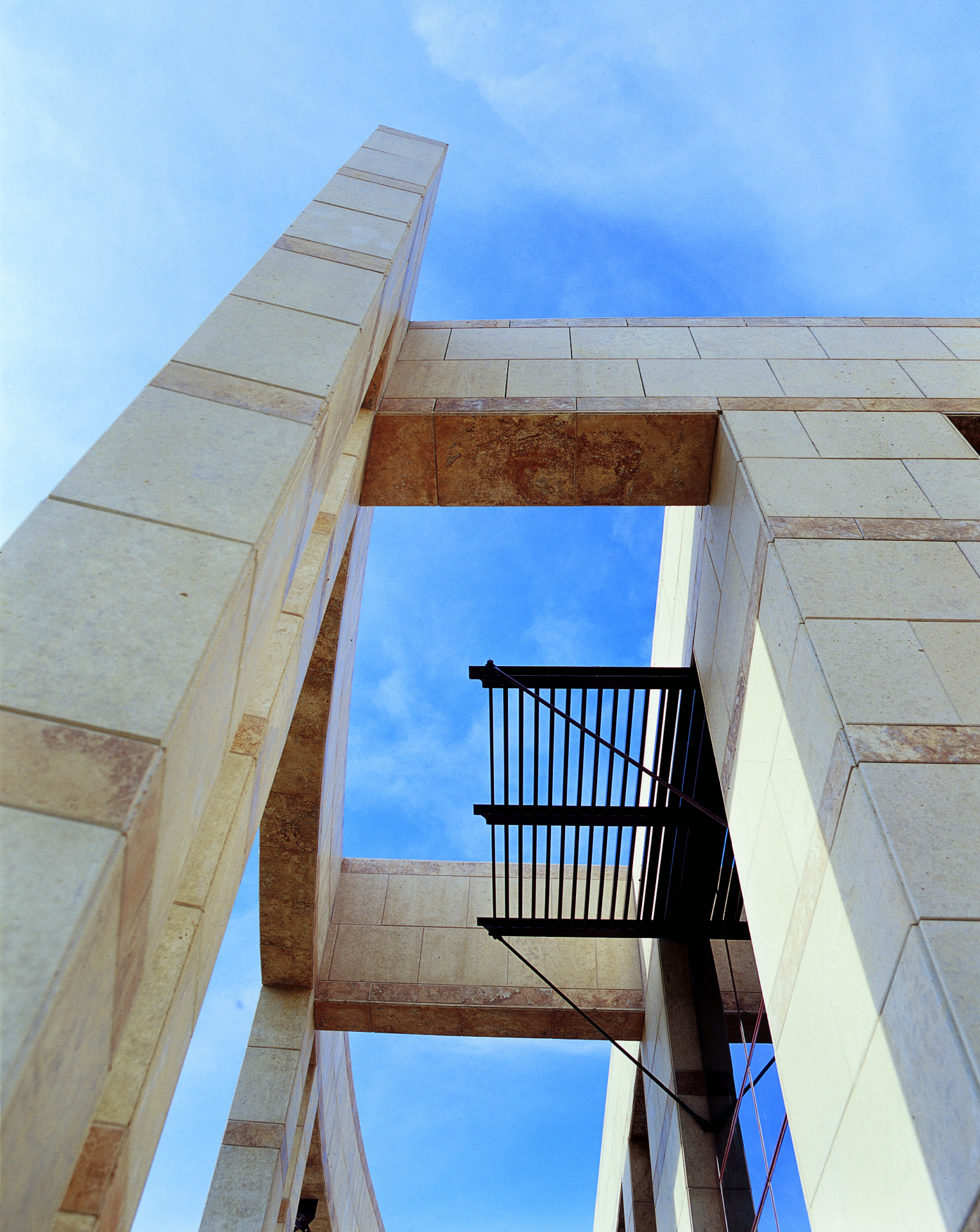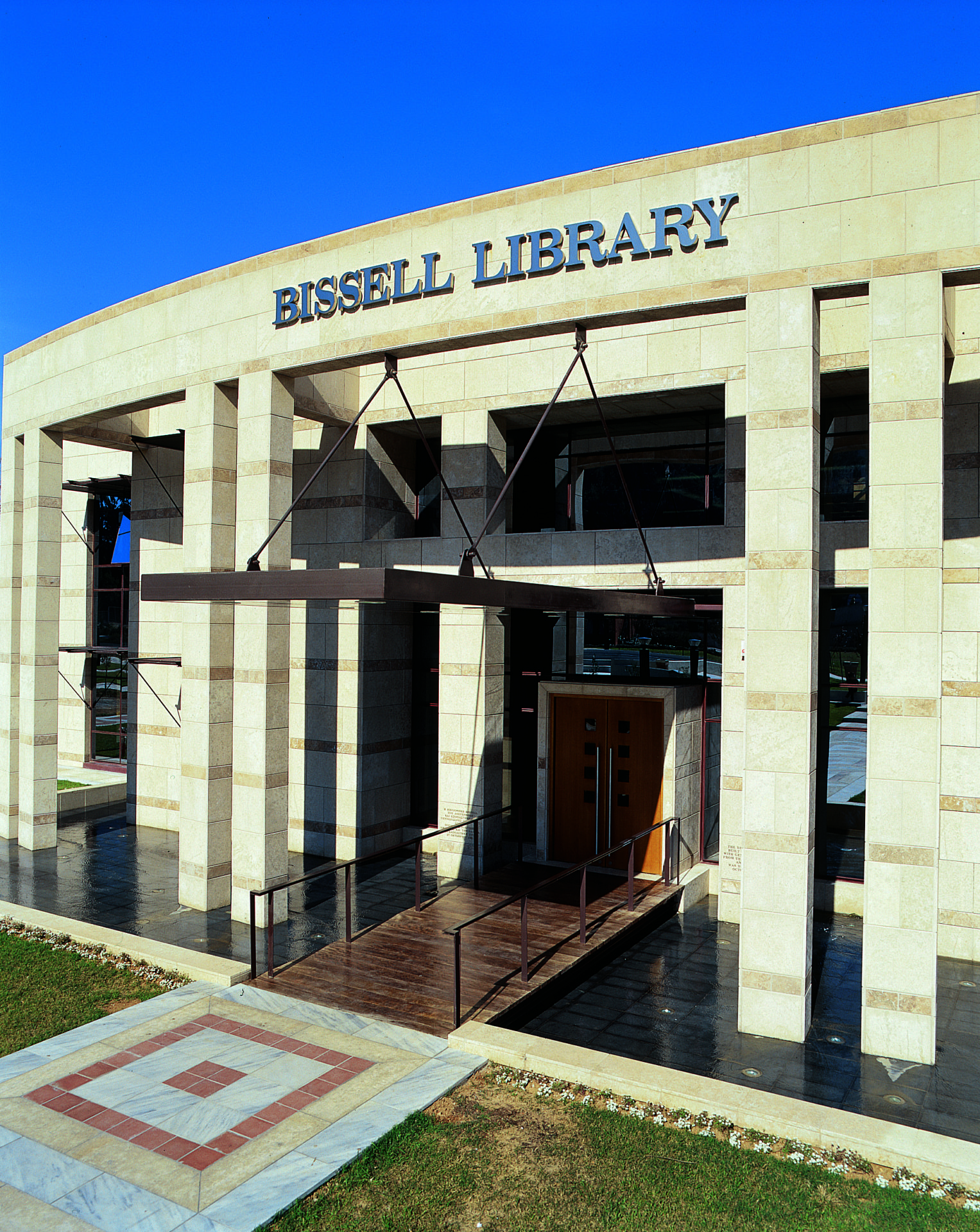Bissel Library
The ‘G. Bissell Library’ is a project implemented through a donation by the former President of Trustees of the American College of Thessaloniki, Mr. George Bissell, and the Stavros Niarchos Foundation. The challenge was to design a modern university library, which could house 100,000 volumes of books, to meet the needs of the American College of Thessaloniki.
The design was directed in the following basic directions:
- Locating the building central to the campus, and next to woodland so that users can enjoy the view and the tranquility of the forest
- Exploiting the orientation of the building
- Provision for the I.T. networking to all areas
- Ensuring that the building is fully accessible to the physically impaired
- Application of sustainable architecture using innovative techniques for natural ventilation, solar heating and day-lighting
- Use of materials and technology to increase their durability and reduce their maintenance
The location and orientation of the Bissell Library combine the continuity of the northern natural lighting in the study rooms, with views to the neighboring woods. The south side of the building, where the main entrance is located, is directed to the inner square of the campus. The building can be approached through an olive alley (the tree symbolizing wisdom), via a footbridge crossing a shallow pond. The element of water is used to highlight the transition from the more obtrusive outdoor areas of the ACT, to the quiet environment of the library. The square shaped building comprises of two floor levels of library facilities and an additional ground floor for secondary uses. This additional floor can be easily adjusted to serve library facilities if required.
Natural lighting of the interior of the building is accomplished through a large, linear slot, covered with glazed units; a skylight, on the roof. A similar split, covered with safety glass, can be found on the ground floor. This design decision ensures direct natural illumination on both library levels, while ensuring heat and sound insulation of every floor. The ground floor houses the main entrance and foyer providing direct access to the lower level of the library through a stairwell, thus allowing its independent operation. Facing the entrance is the round Circulation-Reference desk. The latter is a circular piece of furniture for lending services and information on the front side, research and reference facilities on the other.
Magazine stands and reading areas are located on one side of the entrance, while new book arrivals, and administrative spaces can be found on the other. Enclosed study group spaces and reading rooms, are arranged linearly at the perimeter of the building. Bookshelves with the general collection, areas for the special collections and magazines of controlled use are arranged at the core of this level. On the first floor enclosed spaces of study group rooms, offices and extensive reading areas, are arranged perimetrically, while the general collection bookshelves can be found at the center of the floor level. At the four corners of this floor, areas for personnel, training centers for teachers, educational literature and center for practicing writing – language, can be found. Restrooms for students and teachers are also located on this floor, as well as a staircase leading to the roof.
On the lowest library level there are conference and seminar halls with adequate facilities for tele-conferencing. Classrooms, computer labs and multimedia services, offices and rest rooms for the teaching staff, as well as facilities for technical support, with the necessary electrical and mechanical equipment, are located on the same level.
All areas of the library are accessible for the physically impaired.
The library currently contains:
- over 25,000 printed books
- over 50.000 electronic books (Ebrary database)
- hundreds of multimedia titles including DVDs, CD-ROMS and videos
- selected journals
The layout of the building is arranged on a grid of 7*7 m, specifically selected to match the standard operating dimensions of the bookshelves. All workstations are provided with adequate power and data networks, using the same organizational grid. These design provisions allow all workstations to be supplied with hidden networks of wiring, which running through the false ceilings of the underlying spaces, arrive at the preset positions. Particular emphasis was given on the issue of artificial lighting, with specially designed fixtures, that maximize indirect lighting (illumination) of the space, thus creating a friendly indoor atmosphere. The reduction of sound reflection in the Library is ensured, as well. The building volume is cubical, with a purely symmetrical organization on the north-south, east-west axis. The curved, glass covered, protrusion of the northern façade, provides views of the nearby forest area and the city. On the south side a curved free prostyle is formed, marking the entrance, which is covered with an elongated metal canopy. The protruding metal fire escape stairs on the eastern and western facades, are supported on a framework of beams and columns.
The ground and first floor openings are integrated with the use of external hanging aluminum heat insulated curtain walls, lightly reflective glass. On the south side there are metal louvers for sun protection while in the east and west side openings are shaded with vertical louvers provided with vertical louvers for shading. The architectural composition is accentuated with a system of horizontal louvers that cover the mechanical equipment of the roof. The facades of the building are cladded with posted limestone slabs from Serres, with engravings on horizontal undulating zones of dark and light colored limestone areas. The ventilated shell that is formed maximizes thermal insulation, waterproofing and soundproofing of the interior of the building, and eliminates energy losses, creating an environmentally friendly building. The interior building partitions between different spaces are made of double glazed oak with shutters or panels. The materials have been selected on the basis of their high aesthetic quality and low maintenance needs.
Client
American College Anatolia
Location
ACT, Sevenidi St., Pylea, Thessaloniki , Greece
Year
2002
Area
4850 sq.ms
Honors
Project won 1st prize in an invited tender competition The Architectural Association of Greece has awarded the project with the Eupalinos Prize for “Excellence in Architect-Contractor Collaboration”, in 2005 Published: KTIRIO architectural magazine, January – February 2003 CHOICE – Current Reviews for Academic Libraries, Association of College and Research Libraries, USA, April 2007 Presented: The project was presented at the workshop “LIBRARY ARCHITECTURE: From Vision to Reality”, organized by Goethe - Institute Thessaloniki, December 2008




